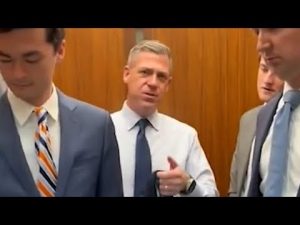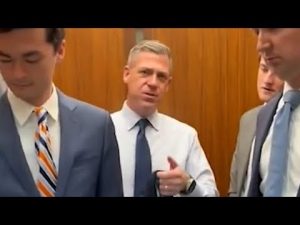The daily commute in America’s big blue cities has morphed into an action-packed thriller, complete with peril at every turn. An ordinary trip on a subway can unexpectedly involve anything from a seven-person robbery gang to someone being pushed onto the tracks by a maniac. Recent incidents in cities like Chicago and New York paint a vivid picture of how crime is a looming threat for everyday commuters. Striking fear into the hearts of citizens just trying to make it home for dinner, such chaos demands a clear, forthright response – and no, simply wishing it away isn’t an option.
In stepped the bold Trump administration, ready to tip the regulatory scales. This isn’t about dictating local policies; rather, it’s using federal funding as leverage. Clean up your act or your funding goes down the drain – a brilliantly simple strategy, if only the governors and mayors care enough to take notice. The spectacle of crime on mass transit isn’t just about inconvenience; it speaks volumes about failed leadership in Democratic strongholds. With all the federal dollars funneled into transit systems, you’d think they’d find a way to banish the chaos from the tracks.
Meanwhile, suburbanites and city dwellers alike are constantly accosted with relentless suggestions to ditch their cars for public transportation. But, with the state of current affairs, swapping the safety of a private car for the potential danger of a subway ride seems nothing less than an absurd gamble. Mayor Adams and other city leaders have assured improvements, but ask any commuter and you’re likely to find a defensive pepper spray enthusiast rather than a reassured constituent. There’s a special brand of irony here, sweetened with a whiff of failure.
On the aviation front, there’s a different sort of drama unfolding. It appears the skies aren’t exactly as friendly as one would hope. The safety of flying is certainly better on paper than it tends to feel when passengers find themselves scampering out onto airplane wings following emergency landings. The number of aviation incidents might be lower compared to previous years, but each one lands with a thud in the public consciousness, creating heightened awareness irrespective of statistical assurances.
Contrast the previous administrations’ priorities, and it becomes clear why travelers feel a tad uneasy. Instead of ensuring robust safety measures, they busied themselves with unnecessary rename and restructuring fantasies. Now, faced with a complex system that could use an update of air traffic controls to, say, join the 21st century, it’s up to the present administration to clean up the skies. It’s about time someone put the emphasis back on safety and efficiency. Perhaps it’s time for those in charge to get out of public office and leave transportation improvements to the professionals – would that be too much to ask? Only time will tell.







